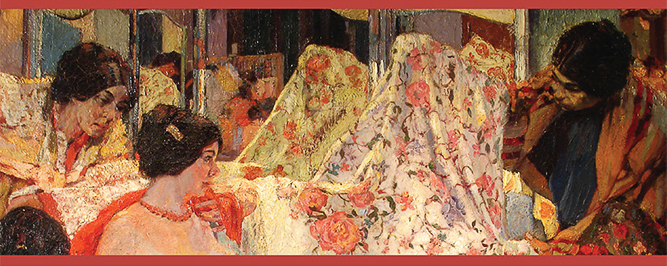Transnational Philippines: Cultural Encounters in Philipine Literature in Spanish, edited by Ortuño Casanova María del Rocío & Axel Gasquet. University of Michigan Press, 2024, which includes meLê yamomo’s chapter, “La Sonoridad del Mundo en Manila del siglo XIX: A Syneasthetic Listening to Early Globalization in Manila” is now out!
The open access e-book is available here: https://doi.org/10.3998/mpub.11959397

Sharing here an excerpt (pp. 182-184) from the chapter, “La Sonoridad del Mundo en Manila del siglo XIX: A Syneasthetic Listening to Early Globalization in Manila”:
“In El Filibusterismo, we hear the polemics of reform and revolution. The idealist Isagani envisions: “Tomorrow we shall be citizens of the Philippines, whose destiny will be a glorious one” (Rizal 1912a, 225). Effusing to his beloved Paulita Gomez, we hear from Isagani a sensuous dream of a modern Philippines: “I hear the steam hiss, the trains roar, the engines rattle! I see the smoke rise— their heavy breathing; I smell the oil— the sweat of monsters busy at incessant toil” (225).
Influenced by Harriet Beecher Stowe’s Uncle Tom’s Cabin and the abolitionist movement, Rizal’s reformist ideology advocates for the voice of the Philippines through its representation in the Spanish parliament. Through such reform, he envisions the abolition of the slave system of polo y servicios and the enactment of the legal treatment of Filipinos and Spaniards as equals, which would give Filipinos rights to participate in the government. Isagani elaborates this worldly vision:
“Free from the system of exploitation, without hatred or distrust, the people will labor because then labor will cease to be a despicable thing, it will no longer be servile, imposed upon a slave. Then the Spaniard will not embitter his character with ridiculous pretensions of despotism, but with a frank look and a stout heart we shall extend our hands to one another, and commerce, industry, agriculture, the sciences, will develop under the mantle of liberty, with wise and just laws, as in prosperous England. (225)”
Simoun’s revolution, however, is brutal— accomplished with the modern warfare technology of the time, inaugurated by the deafening explosion of nitroglycerin. To Simoun, the dynamite disguised as a lamp symbolizes the “concentrated tears, repressed hatred, wrongs, injustice, outrage. It’s the last resort of the weak, force against force, violence against violence” (290). In his plan, “the most dangerous tyrants will be blown to pieces, the irresponsible rulers that hide themselves behind God and the State, whose abuses remain unpunished because no one can bring them to justice” (290). He declares that the rebellion was to be announced by an “explosion that will convert into rubbish the formless monument whose decay I have fostered” (290). The thunderous sound will resound through the city, and its report “will have been heard in the country round, in the mountains, in the caves” (290). It would herald Simoun’s war:
“Upon hearing the explosion, the wretched and the oppressed, those who wander about pursued by force, will sally forth armed to join Cabesang Tales in Santa Mesa, whence they will fall upon the city, while the soldiers, whom I have made to believe that the General is shamming an insurrection in order to remain, will issue from their barracks ready to fire upon whomsoever I may designate. Meanwhile, the crowded populace, thinking that the hour of massacre has come, will rush out prepared to kill or be killed, and as they have neither arms nor organization, you with some others will put yourself at their head and direct them to the warehouses of Quiroga, where I keep my rifles. Cabesang Tales and I will join one another in the city and take possession of it, while you in the suburbs will seize the bridges and throw up barricades, and then be ready to come to our aid to butcher not only those opposing the revolution but also every man who refuses to take up arms and join us. (291)”
The mutiny, however, would be snuffed hastily, in silence. An unidentified figure swiftly seized the lamp and threw it into the river. “The whole thing happened in a second and the dining- kiosk was left in darkness. The lamp had already struck the water before the servants could cry out” (306– 7). We deduce the intruder to be Isagani trying to save the life of Paulita Gomez. “The figure, more agile than they, had already mounted the balustrade and before a light could be brought, precipitated itself into the river, striking the water with a loud splash” (307).
Thus, rather than building toward a crescendo of a deafening explosion, it was in the muting of Simoun’s bomb that the ideological dispute of diplomatic reform and armed revolution in Rizal’s novel culminated.”
